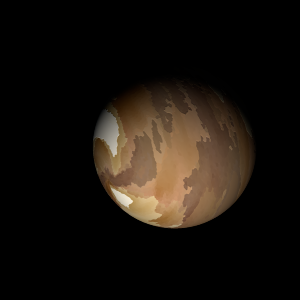|
|
Space Astro
|
Info for exoplanet "Yiryubyu Mya"
| Scientific (actual) data |
|---|
| Name | Kepler-1400 b |
| Planet status | Confirmed |
| Radius | 0.145 |
| Orbital period | 9.06689 |
| Discovered | 2016 |
| Updated | 2021-02-05 |
| Tconj | 2454970 |
| Publication | Announced on a website |
| Detection type | Primary Transit |
| Alternate names | 2MASS J19050519+4526269 b, K02981.01, KIC 9076971 b, KOI-2981 b, KOI-2981.01, WISE J190505.15+452626.6 b |
| Star name | Kepler-1400 |
| Right ascension | 286.27° |
| Declination | 45.44° |
| Mag j | 14.26 |
| Mag h | 13.775 |
| Mag k | 13.768 |
| Star distance | 879 |
| Star metallicity | 0.04 |
| Star mass | 0.83 |
| Star radius | 0.78 |
| Star age | 4.57 |
| Star temperature | 5044 |
| Star alternate names | 2MASS J19050519+4526269, KIC 9076971, KOI-2981, WISE J190505.15+452626.6 |
| Wikipedia article | Kepler-1400 b |
Back
| |
| Fictional info (?) |
|---|
| Suggested name | Yiryubyu Mya |
| Planet type | Cold planet |
| Its orbital period around Kepler-1400 of 9.1 earth days is the shortest of all the planets in its solar system.
It is radically different from Earth in other respects. |
| Atmosphere | Molecular hydrogen | 60% |
| Nitrogen | 27% |
| 2H2O | 7.9% |
| Water vapor | 3.6% |
| Xenon | 0.53% |
| Atmospheric pressure | 7 bar |
 |
| No known satellites |
| Google search for Yiryubyu mya |
|
Website by Joachim Michaelis
|
|
|
|